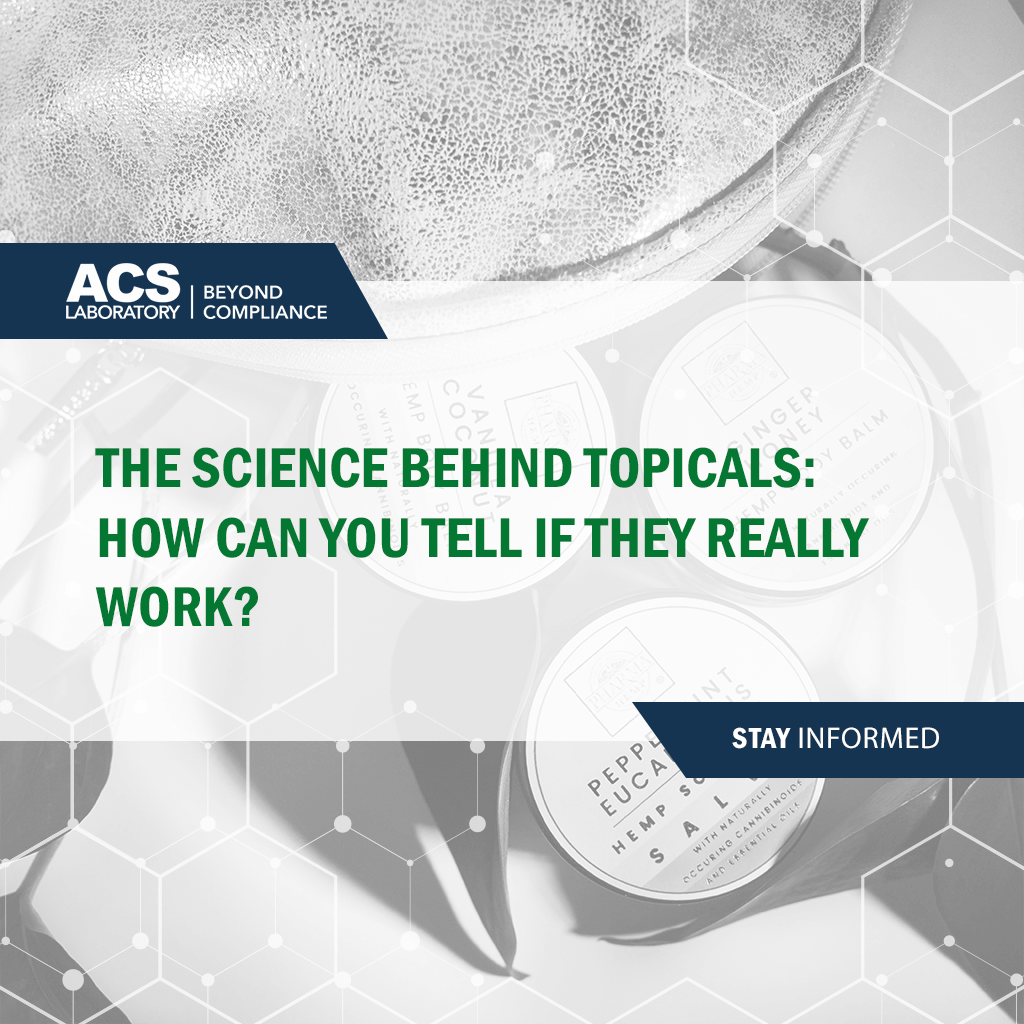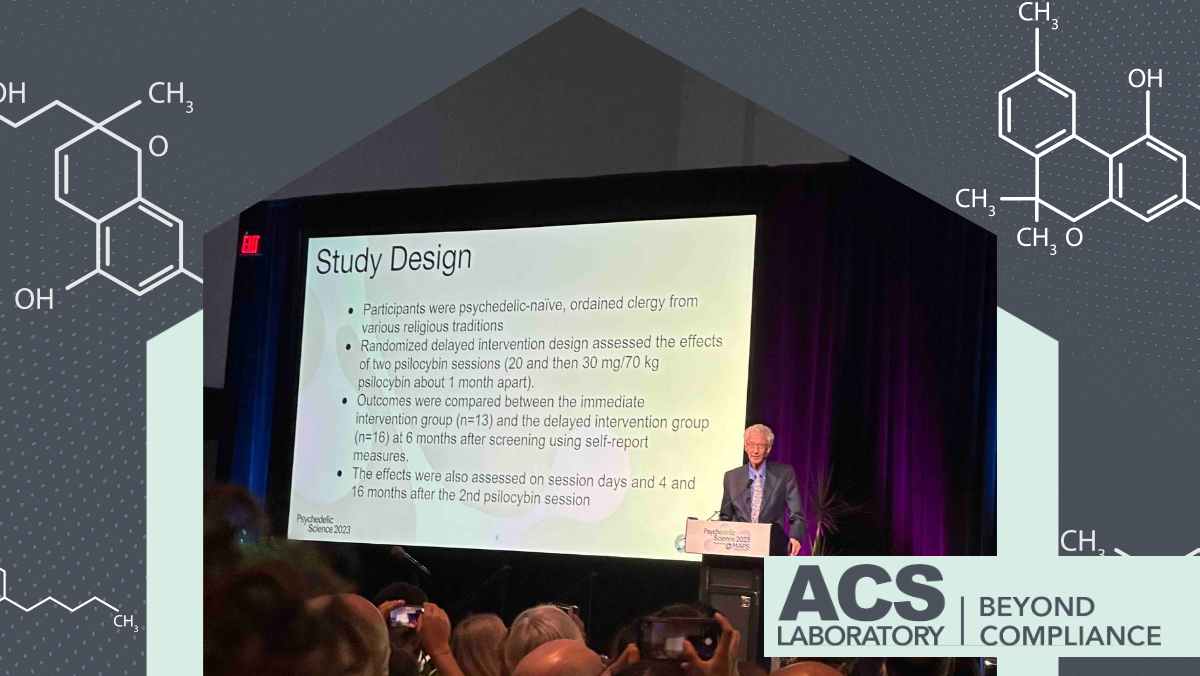The Science Behind Topicals: How Can You Tell If They Really Work?
Hemp and cannabis-infused topicals are popular products for pain and inflammation. How do topicals function? What is the process behind their creation, and how can you tell if a product really works? Let's take a look.
In this post:
- The Secret to the Sauce
- Less is More
- Advanced Topicals for Pain
- How to Know If Topicals Work
- Best Topicals for Pain
- Future of Hemp Topicals
Topicals are lotions, oils, and balms infused with hemp or cannabis compounds to relieve soreness, inflammation, and pain. They’re mostly non-psychoactive, making topicals an excellent choice for those who want therapeutic benefits without cognitive effects. Topicals are also unique in that you can create personalized formulas to target particular age groups, sexes, and ailments.
Dr. Andrea Holmes, the co-Founder of Precision Plant Molecules and the Co-owner of A&A Apothecary, along with her partner, Dr. Amanda McKinney, are passionate about creating custom, science-backed topicals. In fact, they are in the process of creating topicals for Love Hemp, a UK-based CBD Company, the official global partner of the Ultimate Fighting Championship (UFC). While the market is a little behind the US, UK-based CBD creams and lotions are quickly gaining traction.
"Between us, we can use science to identify medical needs and create botanical formulas that target specific functions,” says Andrea. "Our background involves creating unique formulas for women and menstrual pains, male testosterone, sleep, and pain. In addition, we have created several custom formulations with Love Hemp that include CBD, as well as a non-CBD line."
The Secret to the Sauce!
Andrea and Amanda harness their experience in medicine and science along with their deep understanding of plant medicine to get the job done. They think of themselves as medicine women because of their extensive knowledge of herbs, botanicals, and cannabis in particular. Whenever they start the formulation process, Andrea and Amanda always begin by identifying the problem.
For example, UFC fighters experience issues like pain, bacterial infections, and fungus from skin-to-skin contact. So Andrea and Amanda are studying their demographics to find ingredients that target their unique needs.
For example, fighters sweat a lot and transmit bacteria, fungus, and jock itch. They also experience acute pain in particular areas of the body.
Once they identify the problem, Andrea and Amanda start digging into the scientific literature and clinical studies to see if cannabinoids will work, what receptors they target in the Endocannabinoid System, and the proper dosing required for optimal results.
Less is More for Topicals
"Most of the time, we find that less is more when it comes to dosage and ingredients because only so much is bioavailable, and not every cannabinoid works well together. You have to think about the receptors that cannabinoids act on", says Andrea.
"If one compound activates CB1 and the other cancels CB1, then they could counteract each other’s beneficial qualities. So it’s essential to interpret the research to know if the ingredients will be effective when combined.
"The same rule of thumb applies to flavonoids and terpenes. These compounds play an essential role in healing, but you can't throw them together without understanding their mechanisms of action. "When creating formulations, you need to be careful not to put a terpene that activates a specific receptor with a flavonoid or terpene that deactivates the same receptor because they will cancel each other out," says Andrea.
Advanced Topicals for Pain
Andrea and her team are excited to launch their new line in the US, where they will be able to add THCV and other ingredients and technologies. "We are also looking forward to taking advantage of several complementary hemp-based ingredients. Because pain occurs deep in joints and muscles, it requires technology to penetrate the dermis.
"For example, transdermal patches utilize a particular technology that goes deep into the skin," Andrea explains.
Along with specialized formulas, quality ingredients are among the most critical factors when creating topicals that work well. "We create products for health-conscious people with pharma-grade ingredients. We use ISO-certified labs like ACS to test products to assure the high quality of the ingredients."
Andrea also tests her formulas on willing volunteers to ensure their efficacy. She explains, "We think it's crucial to test our formulas, and we often receive inquiries from rehabs and pain clinics to volunteer as test participants.”
How to Know If a Topical Really Works
Andrea advises that when shopping for cannabis topicals, it’s essential to focus on purity, concentration, and consistency. Always look for brands that guarantee they use plants grown without pesticides or synthetic fertilizers. In addition, look for brands that use extraction methods that preserve the cannabinoid profile and do not introduce harmful contaminants. Finally, make sure the products are laboratory tested to prove they are free from mold, solvents, and heavy metals.
According to Andrea, it’s also crucial to look for formulations with ingredients that penetrate the skin. "The skin is a very complex organ, and the way it works is complicated. Molecules are all different sizes, and it can be hard to know if they will absorb into the skin.
"But the good news is ingredients like arnica and menthol can help with penetration. These ingredients can push the cannabinoids through the skin barrier and act as a bio enhancer," explains Amanda.
Finally, it’s essential to ensure the product contains enough cannabinoids, terpenes, and flavonoids to have a therapeutic effect. To ensure the product contains what it claims, you must check the Certificate of Analysis (COA). While you’re at it, check the ingredients on the label to ensure the formula is free from unnatural ingredients like parabens and artificial preservatives.
Best Topicals for Pain
If you’re looking for pain relief, Andrea recommends products designed specifically for pain, like transdermal patches or creams and lotions containing anti-inflammatory botanicals.
"People use cannabis topicals for everything from beauty and skin conditions to pain relief. But most cosmetic products probably won’t break the skin barrier. However, transdermal patches or topicals containing flavonoids allow ingredients to penetrate, and manufacturers know the technology they need to create effective outcomes. As a result, most high-quality pain products should be effective," says Andrea.
The Future of Topicals
Andrea and her team have a specific vision for the future. First, they believe that people like you should go to a cannabis dispensary, CBD retail store, or pharmacy and explain your issues. Ideally, a pharmacist or formulator would then go into the backroom, mix the ingredients to create a customized formula, and deliver it to you for relief.
“We believe in customized compounding of cannabinoids and bioactive botanicals. That is our vision for the future. We want you to be able to walk into a place that is medical and professional and get your needs addressed."
At ACS we test thousands of topicals a month for potency and purity. Where many suppliers fall down is not going the extra step of doing shelf life and stability testing. If you are a formulator of cannabis or hemp topicals and plan on making large batches of products it is highly likely that those products will spend some time on shelves or in storage.
Will they stand the test of time? Will their ingredients lose efficacy after 3 months, 6 months or 12 months? There is only one way to find out!




.jpeg)
.jpeg)
.jpeg)
.jpeg)

.png)
.png)
.png)
.png)
.png)